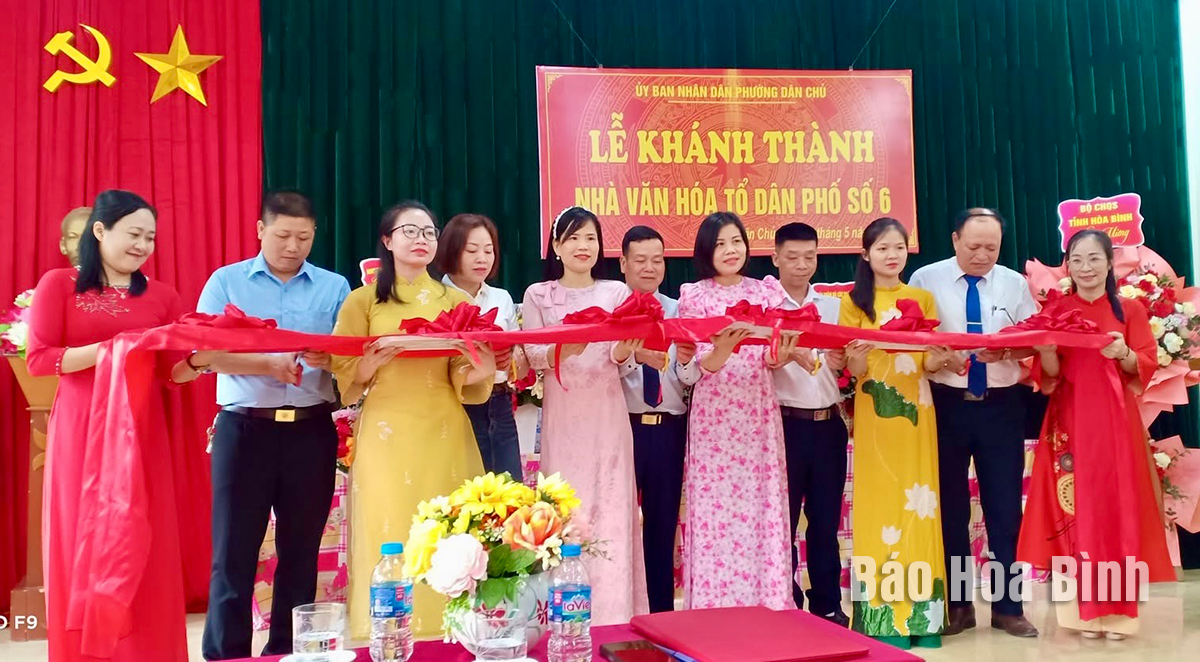



The newly inaugurated cultural house of Residential Area 6 in Dan Chu ward, Hoa Binh city, now meets local demand for communal activities.
Dinh Thi Bich Dam, deputy head of the Division of Culture, Science, and Information of Hoa Binh city, said that after the administrative restructuring at the district and commune levels, the city now has a population of over 140,000, spread across 19 wards and communes, encompassing 214 villages and residential areas, home to six ethnic groups.
The restructuring and merging of residential areas have resulted in an imbalance in the availability of grassroots cultural facilities, some areas now have a surplus, while others face a shortage. Many cultural houses are no longer located in convenient areas for public use or lack sufficient space and seating capacity. Efforts to reorganise, repurpose, and allocate land for the construction and expansion of these centres have encountered numerous challenges, particularly in terms of administrative procedures and limited land resources, she said.
The city has 195 cultural houses serving 208 neighbourhoods. However, 56 of these centres will become surplus after the merger, and 55 are deemed inadequate for community gatherings due to insufficient seating capacity. Moreover, 46 community centres have total land areas of under 200sq.m, and some neighbourhoods have to rely on joint-use facilities to meet urgent needs. Unfortunately, these shared centres face issues regarding management, scheduling, and allocation of space for events.
In early May 2025, residents of Residential Area 6 in Dan Chu ward were delighted to see their newly built cultural centre completed and open for use, meeting the long-standing wishes of the local population.
Nguyen Van Ban, a senior resident, said that this new centre is a huge improvement. Seniors now have a place for meetings and public gatherings. They do morning exercises here, and in the evenings, they come to watch the kids play sports or join cultural rehearsals.
Nguyen Viet Hung, Vice Chairman of the Hoa Binh city People’s Committee, noted that between 2022 and 2024, the city approved financial support for the construction, repair, and expansion of 52 centres, with total state funding exceeding 25.7 billion VND (986,356 USD). Beyond public funds, local communities helped raise nearly 11 billion VND through community fundraising and social mobilisation efforts to support cultural infrastructure development.
For 2025, 55 cultural houses have registered for construction or upgrades, including 18 completely new builds. By the end of the year, the city expects that 64.3% of the plan’s targets will be met.
Hung stressed the critical role of grassroots cultural infrastructure in building a modern Vietnamese cultural identity. Thanks to the strong backing of local leadership and communities, this development plan is on track and already enabling greater access to cultural activities. These centres are helping to unleash local creativity, celebrate cultural diversity, and strengthen public management of cultural life at the grassroots level, he said.